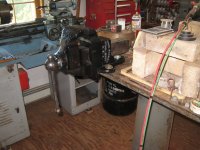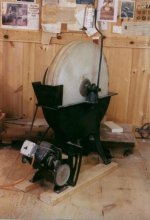Tyrone Shoelaces
Diamond
- Joined
- Apr 19, 2006
- Location
- Manchester, England
I was having a sort out of my tool box the other day and I came across a tool I didn't know I had ! I've got several sets of Engineers Dividers and like most people I have my favourites which are by " Moore & Wright ". Right at the back of the box was I pair I don't recall purchasing. They are 5" long, the usual design with the curved spring on top but the legs are more slender than normal. They are in very nice condition and the makers name is "Athol Machine Co. " I've never seen any by the company in the U.K. before, are they common in the U.S. ? Regards Tyrone.





